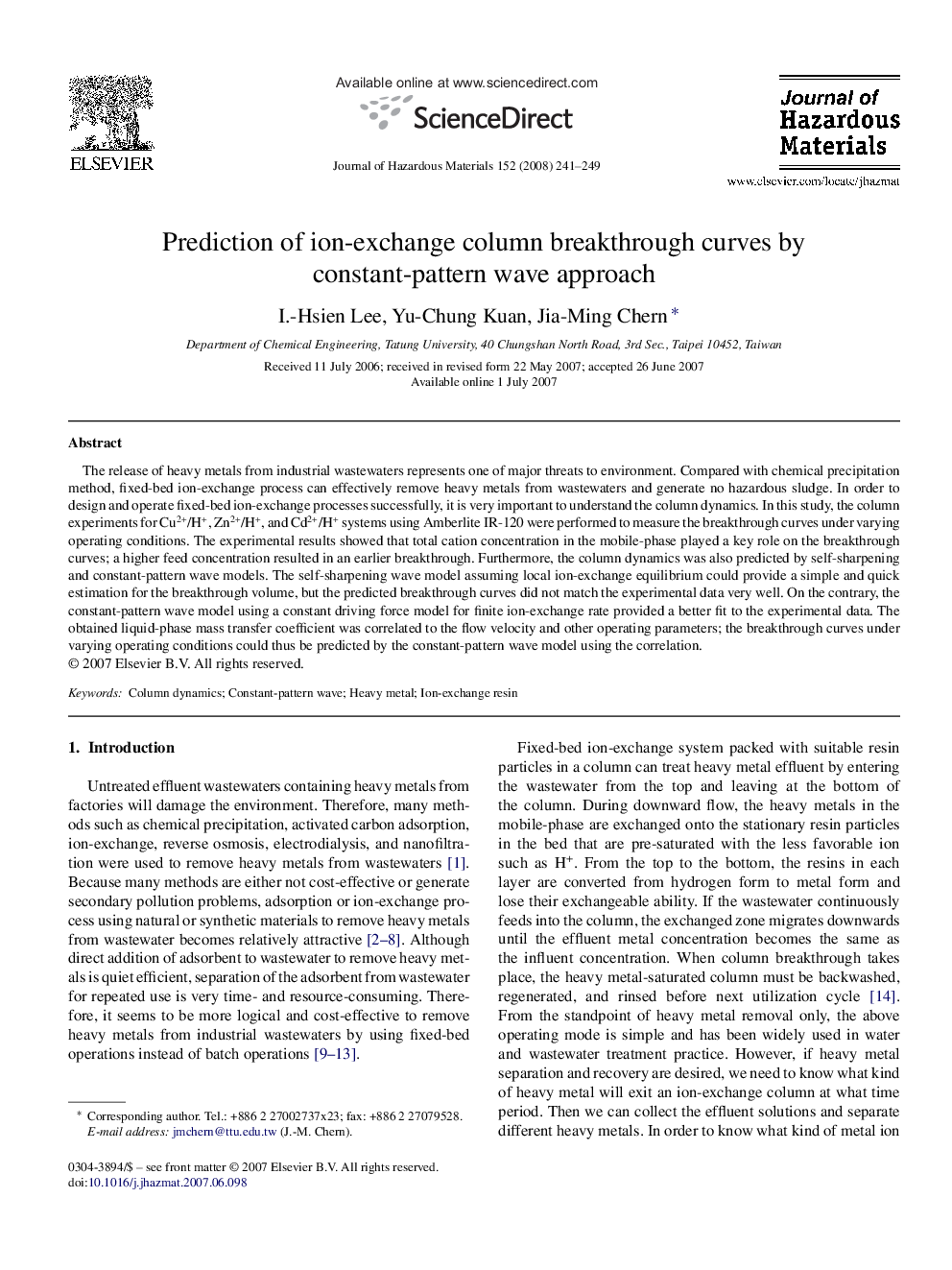| Article ID | Journal | Published Year | Pages | File Type |
|---|---|---|---|---|
| 583797 | Journal of Hazardous Materials | 2008 | 9 Pages |
Abstract
The release of heavy metals from industrial wastewaters represents one of major threats to environment. Compared with chemical precipitation method, fixed-bed ion-exchange process can effectively remove heavy metals from wastewaters and generate no hazardous sludge. In order to design and operate fixed-bed ion-exchange processes successfully, it is very important to understand the column dynamics. In this study, the column experiments for Cu2+/H+, Zn2+/H+, and Cd2+/H+ systems using Amberlite IR-120 were performed to measure the breakthrough curves under varying operating conditions. The experimental results showed that total cation concentration in the mobile-phase played a key role on the breakthrough curves; a higher feed concentration resulted in an earlier breakthrough. Furthermore, the column dynamics was also predicted by self-sharpening and constant-pattern wave models. The self-sharpening wave model assuming local ion-exchange equilibrium could provide a simple and quick estimation for the breakthrough volume, but the predicted breakthrough curves did not match the experimental data very well. On the contrary, the constant-pattern wave model using a constant driving force model for finite ion-exchange rate provided a better fit to the experimental data. The obtained liquid-phase mass transfer coefficient was correlated to the flow velocity and other operating parameters; the breakthrough curves under varying operating conditions could thus be predicted by the constant-pattern wave model using the correlation.
Related Topics
Physical Sciences and Engineering
Chemical Engineering
Chemical Health and Safety
Authors
I.-Hsien Lee, Yu-Chung Kuan, Jia-Ming Chern,
